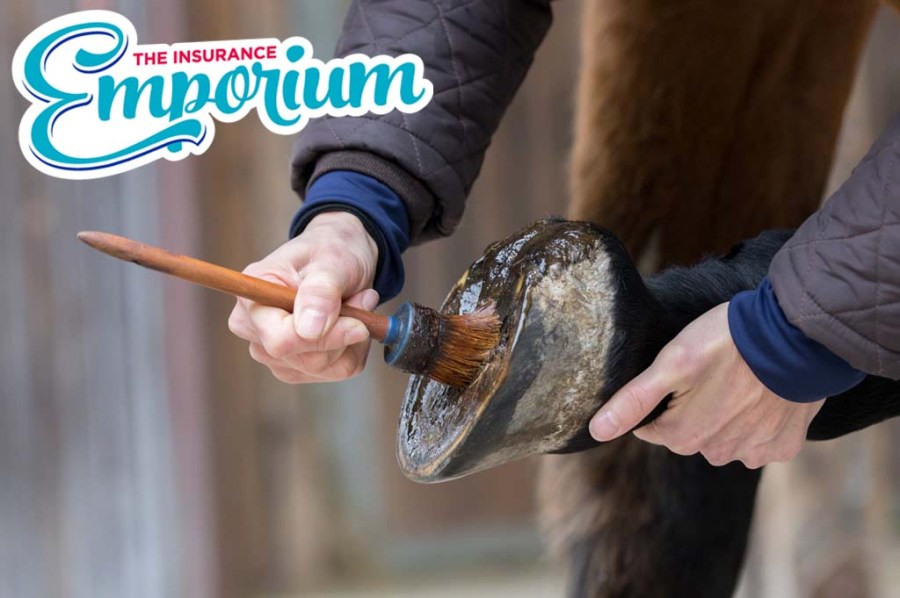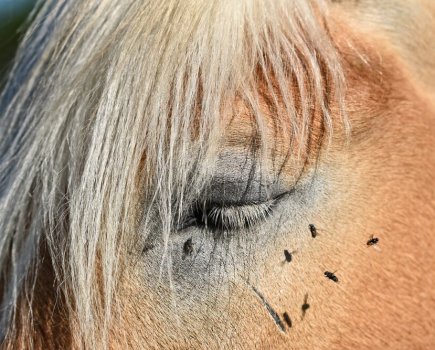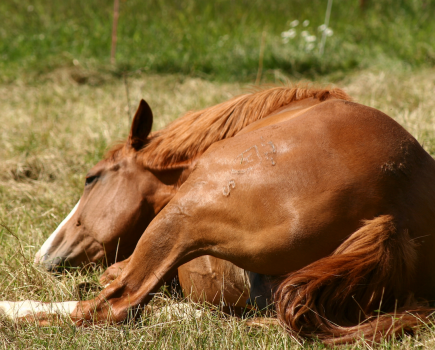*PROMOTION*
Did you know that according to recent studies, one in 10 horses and ponies are diagnosed with laminitis each year?
Laminitis can be very painful for your horse and treatment can be costly, especially if your horse is suffering long term. In some extreme cases, equines may need to be euthanised as the pain can become unmanageable.
The Insurance Emporium has put together this handy guide to recognising, treating, and preventing laminitis.
Don’t forget to also check out our horse Insurance — and don’t miss an exclusive offer for Your Horse readers at the bottom of this page — so you can cover unexpected health conditions such as laminitis.
What is laminitis?
Laminitis occurs when the interlocking laminae inside your horses’ hooves become inflamed or damaged.
It can be caused by many different factors, including diet changes, illness, injury, and endocrine diseases.
Horses that have had laminitis previously are more likely to suffer from future episodes.
How can I spot laminitis?
There are many symptoms of laminitis. If your horse becomes lame, shifts its weight, shortens its strides, or becomes reluctant to move, then you should get in touch with a vet immediately.
Your vet will diagnose your horse by conducting a physical examination and by carrying out an X-ray.
Do not try and diagnose laminitis yourself.
How is it treated?
Treatment options vary. Depending on how severe the laminitis is, the vet may suggest the following:
- If your horse is overweight, you may need to place it on a special diet to help it lose excess fat.
- Focus on caring for your horse’s hooves. Your farrier and vet can work together on hoof care.
- Administer medicines (if prescribed by your vet) to control the pain.
- Consider foot support and box rest.
How can I prevent laminitis?
There are ways that can help prevent laminitis in your horse, including:
1 Letting your horse heat itself naturally
Ditch the rug and let your horse burn calories trying to keep itself warm on colder days. This can help to keep your horse’s weight down and prevent it from developing laminitis due to obesity.
2 Keep a close eye on your horse’s weight
Use a weigh tape and fat score your horse regularly.
3 Make feeding time interesting
Encourage your horse to think when it’s eating. This can be done using trickle feeders or hay balls. Be inventive!
4 Get to know your horse
The key to spotting laminitis early is knowing your horse. If you believe something isn’t right, contact your vet for advice.
Get covered
Taking out adequate horse insurance can help you cope financially should your horse develop a serious health condition such as laminitis.
Here at The Insurance Emporium, we tailor our policies to suit your needs, so you can continue doing what you love.
Save 30% on horse insurance!
 If you’re a horse owner, you might want to think about taking out insurance for your horse. At The Insurance Emporium, our Defaqto 5 Star Rated Horse Insurance includes cover for Death, Theft Or Straying as standard. You can then customise your cover with our range of optional benefits. You could even receive up to 30% discount* on your policy! Head over to theinsuranceemporium.co.uk to see if we have the policy for you.
If you’re a horse owner, you might want to think about taking out insurance for your horse. At The Insurance Emporium, our Defaqto 5 Star Rated Horse Insurance includes cover for Death, Theft Or Straying as standard. You can then customise your cover with our range of optional benefits. You could even receive up to 30% discount* on your policy! Head over to theinsuranceemporium.co.uk to see if we have the policy for you.
*The 30% discount is made up of 20% Introductory Discount plus 10% Multi-horse Discount (if appropriate). The Introductory Discount is available for the first 12 premium payments on lunar monthly and calendar monthly policies, or one premium payment on annual policies.









